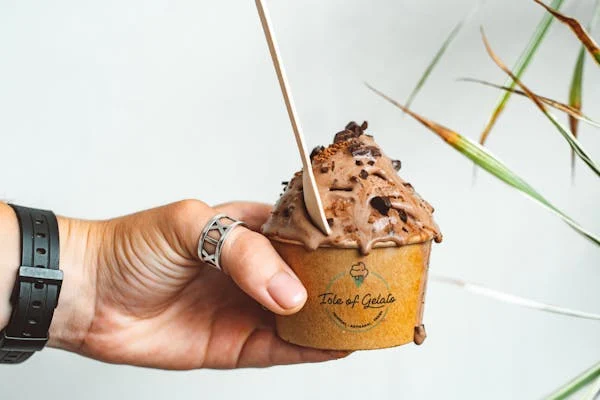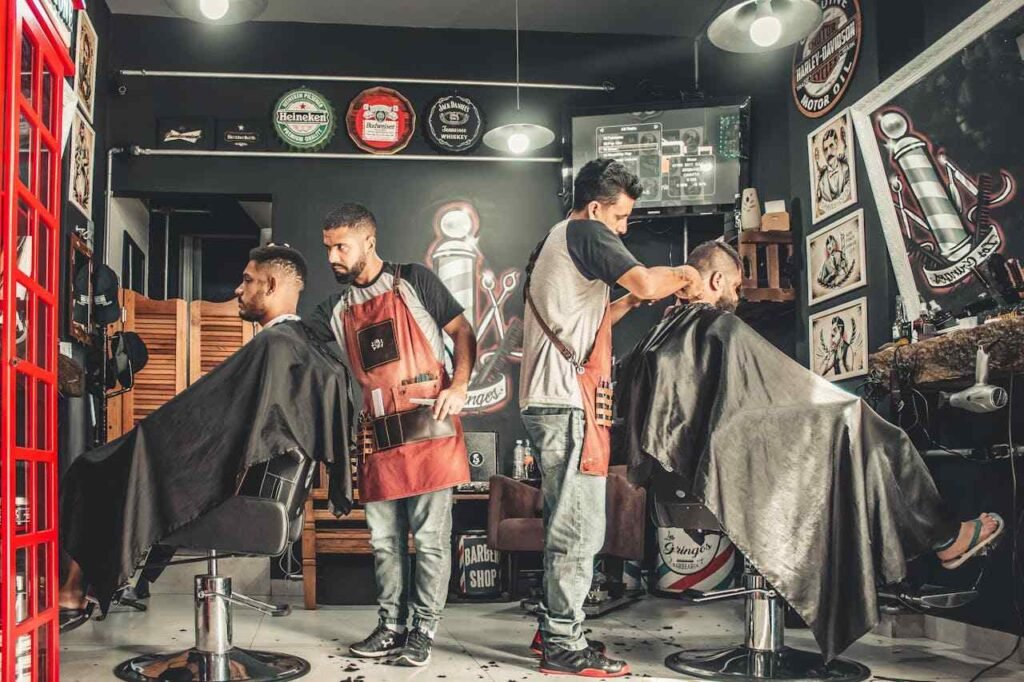Food brands have a unique advantage on social media because everyone loves food. From delicious recipes to behind-the-scenes looks at your kitchen, there are endless ways to engage your audience. In this guide, we’ll explore a variety of creative and effective social media ideas to help your food brand stand out. Whether you’re looking to increase engagement, drive traffic to your website, or simply connect with your followers, these strategies will provide you with the tools you need to succeed. Let’s dive in and discover the delicious possibilities!
Showcase Your Products

High-Quality Photos and Videos
One of the most important aspects of promoting a food brand on social media is using high-quality photos and videos. People eat with their eyes first, so make sure your visuals are mouth-watering. Invest in a good camera or hire a professional photographer to capture your dishes in the best light. Use natural lighting and focus on the details that make your food unique.
Recipe Videos
Create short and engaging recipe videos that showcase your products in action. These videos can be as simple as a step-by-step guide to making a dish using your ingredients. Make sure to keep the videos short and sweet, ideally under one minute, to hold your audience’s attention. Share these videos on Instagram, TikTok, and Facebook to reach a wide audience.
Behind-the-Scenes Content
Give your followers a behind-the-scenes look at how your products are made. This could include a tour of your kitchen, interviews with your chefs, or a look at the sourcing of your ingredients. Behind-the-scenes content humanizes your brand and helps build a connection with your audience. It also provides transparency, which can increase trust and loyalty.
Strategic Product Placement
Influencer Collaborations
Partner with influencers who can authentically showcase your products to their followers. Influencers can create posts or videos featuring your products in everyday use, adding credibility and reach to your brand. Choose influencers who align with your brand values and have a following that matches your target audience. This strategy not only increases visibility but also builds trust through word-of-mouth marketing.
User Testimonials
Feature testimonials from satisfied customers who love your products. Create posts that highlight these testimonials, accompanied by high-quality images of the dishes they’ve created. Authentic reviews and real-life usage scenarios can build credibility and encourage others to try your products. Consider creating a dedicated highlight reel on Instagram for these testimonials to make them easily accessible.
Highlight Product Features and Benefits
Ingredient Spotlights
Create posts that focus on the unique ingredients in your products. Highlight their health benefits, origins, and how they contribute to the overall flavor and quality of your dishes. For example, if you use organic, locally-sourced produce, showcase this in your content to appeal to health-conscious and environmentally-aware consumers. This not only educates your audience but also differentiates your brand from competitors.
Versatility Showcases
Demonstrate the versatility of your products by showcasing different ways they can be used. For instance, if you sell a particular sauce, show how it can be used as a marinade, a dip, or a cooking ingredient. Create a series of posts or videos that explore these different uses. This can inspire your audience to incorporate your products into their meals more frequently, driving repeat purchases.
Utilize User-Generated Content
Customer Spotlights
Feature content created by your customers. Encourage them to share their creations using your products, and highlight the best submissions on your social media channels. This not only provides you with fresh content but also builds a community around your brand. Showing appreciation for your customers’ creativity fosters loyalty and encourages others to share their experiences as well.
Social Media Challenges
Launch social media challenges that encourage users to create and share content using your products. For example, a “Recipe of the Month” challenge where followers submit their favorite recipes using your ingredients. Offer prizes or incentives for the best entries to drive participation. These challenges can generate a lot of user-generated content and increase engagement with your brand.
Interactive Product Demonstrations
Live Cooking Classes
Host live cooking classes where you demonstrate how to use your products in various recipes. Engage with viewers by answering their questions in real-time and offering tips and tricks. Promote these classes in advance to build anticipation and ensure a good turnout. Live interactions create a more personal connection with your audience and showcase the practical uses of your products.
Step-by-Step Guides
Create detailed step-by-step guides for using your products, either in the form of videos or blog posts. These guides can help customers get the most out of your products and inspire them to try new recipes. Share these guides on your social media platforms and encourage your followers to share their own results. Providing useful content that adds value to your customers’ lives can enhance brand loyalty.
Optimize Product Descriptions
Engaging Captions
Write engaging and descriptive captions that highlight the key features and benefits of your products. Use storytelling to connect with your audience emotionally. For example, share the story behind a particular dish or ingredient, or describe a personal experience with the product. Captions that tell a story or evoke emotions are more likely to resonate with your audience and encourage them to engage with your posts.
Clear Call-to-Actions
Include clear call-to-actions (CTAs) in your posts to guide your audience on what to do next. Whether it’s visiting your website, trying a recipe, or purchasing a product, make sure your CTAs are straightforward and compelling. Phrases like “Try this recipe today!” or “Shop now for fresh ingredients” can prompt immediate action. Effective CTAs can drive traffic to your website and increase conversions.
Leverage Seasonal and Trending Content
Seasonal Products
Highlight seasonal products and recipes that align with current trends and holidays. For example, during the fall, you can showcase pumpkin-flavored items or holiday-themed recipes. Seasonal content is timely and relevant, which can increase engagement and drive sales. Plan your content calendar around key dates and events to maximize impact.
Trending Challenges
Participate in trending challenges and hashtags relevant to the food industry. For example, if there’s a viral cooking trend or challenge, create content that ties in with it using your products. This can increase visibility and help your brand join the conversation around popular topics. Staying current with trends shows that your brand is up-to-date and engaged with the wider community.
Engage with Your Audience
Interactive Stories
Use Instagram and Facebook Stories to create interactive content. Incorporate features like polls, quizzes, and question stickers to engage your audience. For example, you can ask your followers to vote on their favorite dish or guess the ingredients in a new recipe. Interactive stories are not only fun but also provide valuable insights into your audience’s preferences.
User-Generated Content
Encourage your followers to create and share their own content featuring your products. This could be photos of their meals, reviews, or even their own recipes. Feature the best submissions on your social media channels to show appreciation and build a sense of community. User-generated content not only provides you with free content but also acts as social proof, enhancing your brand’s credibility.
Contests and Giveaways
Host contests and giveaways to increase engagement and attract new followers. For example, you can ask your followers to share their favorite recipes using your products for a chance to win a prize. Make sure to clearly outline the rules and promote the contest across all your social media channels. Contests and giveaways create excitement and encourage participation.
Collaborate with Influencers
Partner with Food Bloggers
Collaborate with food bloggers and influencers who align with your brand. These influencers can create content featuring your products, such as recipes, reviews, or cooking tutorials. Influencers have their own loyal following, which can help you reach a broader audience. Make sure to choose influencers whose audience matches your target demographic for the best results.
Host Live Cooking Demos
Invite influencers or chefs to host live cooking demos on your social media platforms. These live sessions can showcase your products and provide valuable cooking tips and tricks. Promote the live demos ahead of time to build anticipation and ensure a good turnout. Live cooking demos are interactive and provide a unique way to engage with your audience in real-time.
Collaborate on Content
Work with influencers to create collaborative content, such as co-branded recipes or cooking challenges. This type of content can be shared on both your social media channels and the influencer’s, providing exposure to a wider audience. Collaboration not only boosts engagement but also adds variety to your content.
Strategically Select Influencers
Align with Your Brand Values
When choosing influencers to collaborate with, ensure they align with your brand values and mission. Their content style, tone, and values should reflect those of your brand. For instance, if your brand focuses on sustainability, partner with influencers who advocate for eco-friendly practices. This alignment ensures that their endorsement feels authentic and resonates with your target audience.
Micro-Influencers for Niche Markets
Consider working with micro-influencers who have smaller but highly engaged followings. Micro-influencers often have more personal connections with their audience, leading to higher engagement rates. They are also typically more cost-effective than macro-influencers. Targeting specific niches with micro-influencers can help you reach dedicated and passionate communities that align with your brand.
Long-Term Partnerships
Instead of one-off collaborations, aim to build long-term partnerships with influencers. This can lead to more authentic and consistent promotion of your brand. Long-term partnerships allow influencers to develop a deeper understanding of your products and convey that trust to their followers. For example, an influencer could create a monthly recipe series featuring your products, providing ongoing exposure and engagement.
Create Unique Campaigns
Influencer Takeovers
Organize influencer takeovers where influencers control your social media accounts for a day. They can share content, engage with your audience, and provide their unique perspective on your brand. This can attract their followers to your account and provide fresh content for your audience. Plan the takeover in advance to ensure the content aligns with your brand message and goals.
Collaborative Product Launches
Partner with influencers to launch new products. Influencers can create exclusive content leading up to the launch, such as unboxing videos, first impressions, or recipe creations. They can also host live sessions on launch day to build excitement and drive sales. Collaborative product launches leverage the influencer’s reach and credibility, creating a buzz around your new offerings.
Branded Challenges and Contests
Design branded challenges and contests in collaboration with influencers. For example, create a cooking challenge where followers use your products and submit their recipes or photos. Influencers can promote the challenge, participate themselves, and select winners. This strategy not only boosts engagement but also generates user-generated content and increases brand visibility.
Maximize Impact with Cross-Promotion
Cross-Platform Campaigns
Execute cross-platform campaigns that utilize the strengths of different social media platforms. For instance, an influencer could announce a recipe challenge on Instagram, share detailed cooking tutorials on YouTube, and post behind-the-scenes content on TikTok. Cross-platform campaigns ensure broader reach and engagement across multiple channels.
Use Influencer Insights
Leverage the insights and analytics that influencers can provide about their audience. Understanding the demographics, preferences, and behaviors of their followers can help tailor your campaign for maximum impact. This data-driven approach ensures that your collaboration is targeted and effective, leading to higher engagement and conversion rates.

Measure and Optimize Collaborations
Track Performance Metrics
Monitor key performance metrics such as engagement rates, reach, click-through rates, and conversions to assess the success of your influencer collaborations. Use tools like Google Analytics, Instagram Insights, and influencer marketing platforms to gather and analyze data. Understanding which strategies and influencers drive the best results allows you to optimize future campaigns.
Gather Feedback
Collect feedback from both the influencers and your audience to understand their experiences and identify areas for improvement. Conduct surveys, read comments, and engage in conversations to gather insights. This feedback can help refine your collaboration strategy and enhance future partnerships.
Continuous Improvement
Stay updated with industry trends and continuously seek ways to innovate your influencer marketing strategy. Experiment with new formats, platforms, and types of content to keep your campaigns fresh and engaging. Regularly review and adjust your approach based on performance data and feedback to ensure ongoing success.
Engage with Influencer Content
Active Engagement
Actively engage with the content created by influencers about your brand. Like, comment, and share their posts to show appreciation and amplify their reach. Engaging with influencer content not only strengthens your partnership but also encourages their followers to engage with your brand.
Create Recap Content
Compile the best content from your influencer collaborations into recap posts or highlight reels. Share these on your social media channels and website to showcase the impact of your campaigns. Recap content can attract new followers, provide inspiration, and demonstrate the success of your influencer partnerships.
Share Valuable Tips and Advice
Cooking Tips and Hacks
Share useful cooking tips and hacks that make meal preparation easier and more enjoyable. These can include shortcuts for common kitchen tasks, storage tips for keeping ingredients fresh, or creative ways to use leftovers. Visual content like videos or step-by-step photo guides can make these tips more engaging and easy to follow. Your audience will appreciate the practical advice, and it can position your brand as a helpful resource in the kitchen.
Nutritional Information
Provide nutritional information about your products and recipes. Many people are interested in knowing the health benefits of what they’re eating. Create posts that highlight the nutritional value of your ingredients, offer healthy eating tips, and share balanced meal ideas. This not only informs your audience but also helps those who are health-conscious to make better food choices.
Seasonal Cooking Ideas
Align your content with the seasons by sharing seasonal cooking ideas and recipes. Highlight fresh, in-season ingredients and show your audience how to incorporate them into their meals. Seasonal content is timely and relevant, which can increase engagement. For example, share warm, comforting recipes in the winter and light, refreshing dishes in the summer.
Leverage Technology
Augmented Reality (AR) Filters
Develop custom AR filters for platforms like Instagram and Snapchat. These filters can be fun and interactive, allowing users to engage with your brand in a unique way. For example, create a filter that adds a chef’s hat and apron to the user or one that places them in a virtual kitchen with your products. Encourage your followers to use these filters and share their photos or videos.
QR Codes for Recipes
Use QR codes to make it easy for your audience to access recipes and product information. Place QR codes on your packaging, in your social media posts, or on your website. When scanned, the codes can lead to detailed recipes, cooking videos, or nutritional information. This adds a digital touchpoint to your products and enhances the user experience.
Virtual Cooking Classes
Host virtual cooking classes to teach your audience how to use your products in various recipes. These classes can be live or pre-recorded and shared on platforms like YouTube, Instagram, and Facebook. Virtual cooking classes provide an interactive learning experience and can be a great way to showcase the versatility of your products. Promote these classes across your social media channels to attract a wide audience.
Strategically Implementing Technology for Food Brands
Interactive Recipe Apps
Develop a branded interactive recipe app that provides users with a library of recipes featuring your products. The app can include features such as step-by-step cooking guides, shopping lists, and meal planning tools. Users can input their dietary preferences and the app can suggest recipes accordingly. This not only helps your customers but also keeps them engaged with your brand. Promote the app through your social media channels to drive downloads and usage.
Smart Kitchen Gadgets Integration
Integrate your products with smart kitchen gadgets to enhance the cooking experience. Partner with manufacturers of smart ovens, fridges, or cooking assistants to create recipes specifically designed for these devices. For example, if you sell baking mixes, develop recipes that can be programmed into smart ovens for perfect results every time. Promote these integrations on social media to appeal to tech-savvy home cooks.
AI-Powered Recipe Suggestions
Use AI to provide personalized recipe suggestions to your audience. Implement an AI chatbot on your website and social media platforms that can interact with users to understand their preferences and dietary restrictions. The chatbot can then suggest recipes featuring your products that are tailored to their needs. This personalized approach can enhance customer satisfaction and drive product usage.
Enhance Engagement with Visual Content
360-Degree Videos
Create 360-degree videos to give your audience an immersive look at your kitchen, production process, or events. These videos allow users to explore the environment by moving their device or dragging the screen. Share these videos on platforms like Facebook and YouTube to provide a unique and engaging experience. 360-degree videos can make your audience feel like they are part of the action, enhancing their connection to your brand.
Virtual Reality (VR) Tastings
Offer virtual reality tastings where customers can experience the sights and sounds of your dining experience from their own home. Send out tasting kits with your products and pair them with a VR experience that simulates a visit to your restaurant or kitchen. This can be particularly effective for product launches or exclusive events. Promote the VR tastings on your social media channels to create buzz and drive participation.
Optimize Digital Presence
Voice Search Optimization
Optimize your content for voice search to cater to the growing number of users using voice assistants like Alexa, Google Assistant, and Siri. Ensure your recipes, product information, and blog posts are easily accessible through voice search. For example, create concise, clear recipes that can be read aloud by voice assistants. Promote this capability on your social media to highlight the convenience of accessing your content hands-free.
Enhanced E-commerce Experience
Improve your e-commerce experience by integrating advanced technology features. Use augmented reality to allow customers to visualize products in their kitchen before purchasing. Implement chatbots to assist with customer service and provide personalized recommendations. Ensure your online store is mobile-friendly and easy to navigate. Share updates and tutorials on how to use these features through your social media channels.
Data-Driven Marketing

Social Media Analytics
Leverage social media analytics tools to gather insights into your audience’s behavior and preferences. Use platforms like Facebook Insights, Instagram Analytics, and Twitter Analytics to track engagement, reach, and conversion rates. Analyze this data to understand which types of content perform best and adjust your strategy accordingly. Regularly share insights and performance updates with your team to ensure everyone is aligned.
Predictive Analytics
Implement predictive analytics to anticipate customer behavior and trends. Use this technology to analyze past data and predict which products will be popular, when to launch new items, and how to optimize your marketing campaigns. Predictive analytics can help you stay ahead of the competition and make data-driven decisions. Share findings and insights from your predictive analytics efforts on your social media channels to showcase your innovative approach.
Engage with Cutting-Edge Content
AI-Generated Content
Experiment with AI-generated content to create unique and engaging posts. Use AI tools to generate recipe ideas, blog posts, or social media captions. For example, you can use GPT-3 to create a series of recipe posts that incorporate your products in creative ways. AI-generated content can save time and provide fresh perspectives. Highlight your use of AI technology in your content strategy to position your brand as forward-thinking and innovative.
Interactive Webinars
Host interactive webinars that combine education and entertainment. Use advanced webinar platforms that offer features like live polls, Q&A sessions, and breakout rooms. Invite guest speakers, chefs, or nutritionists to provide valuable insights and engage with your audience. Promote these webinars across your social media channels and provide incentives for attendance, such as exclusive discounts or access to premium content.
Personalized Customer Experience
Customized Subscription Boxes
Offer customized subscription boxes that cater to individual preferences. Use data collected from your website and social media interactions to personalize the contents of each box. For example, if a customer frequently engages with your vegan recipes, include vegan products and recipes in their subscription box. Promote these personalized boxes on social media to highlight the tailored experience you offer.
Dynamic Email Campaigns
Implement dynamic email campaigns that adjust content based on user behavior and preferences. Use technology to track interactions and send personalized emails featuring relevant products, recipes, and offers. For example, if a customer has recently purchased a baking mix, send them a follow-up email with additional recipes and complementary products. Promote the benefits of subscribing to your email list on social media to grow your audience.
Conclusion
Leveraging technology to create mouth-watering social media content for your food brand can significantly enhance engagement and foster deeper connections with your audience. By integrating advanced tools like AR filters, QR codes, and virtual reality experiences, you can offer unique and interactive ways for followers to connect with your brand. Hosting virtual cooking classes, using AI for personalized recipe suggestions, and optimizing your digital presence with voice search and enhanced e-commerce features are all strategies that can set your brand apart in a competitive market.
Collaborating with influencers, engaging with high-quality visual content, and utilizing gamification can further amplify your reach and drive meaningful interactions. By strategically implementing these ideas, you not only showcase your products effectively but also build a loyal community around your brand.
Read Next:
- Long-Tail Keyword Strategy: Skyrocket Your Startup’s SEO ROI
- Aligning Startup SEO Budget with Business Objectives
- Proving Startup SEO ROI to Stakeholders: Reporting Strategies
- Startup SEO ROI Tracking: Metrics to Measure Business Growth
- Balancing SEO and Paid Advertising Budgets for Startup Success






















Comments are closed.